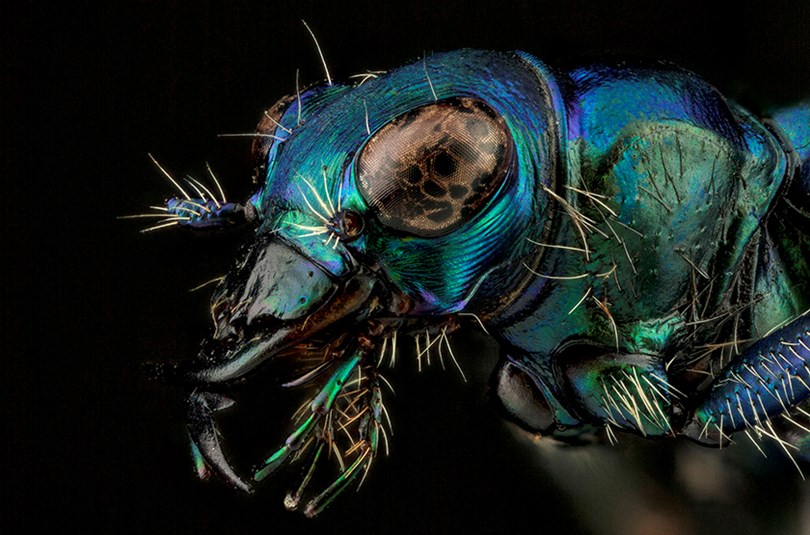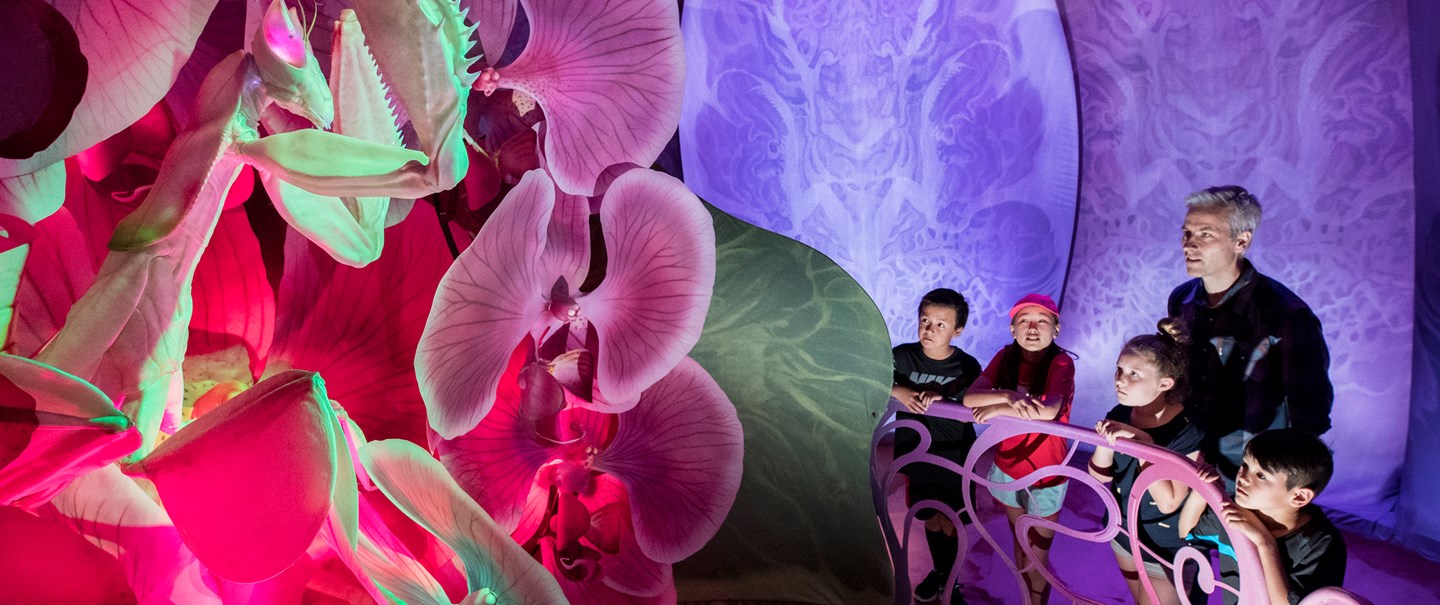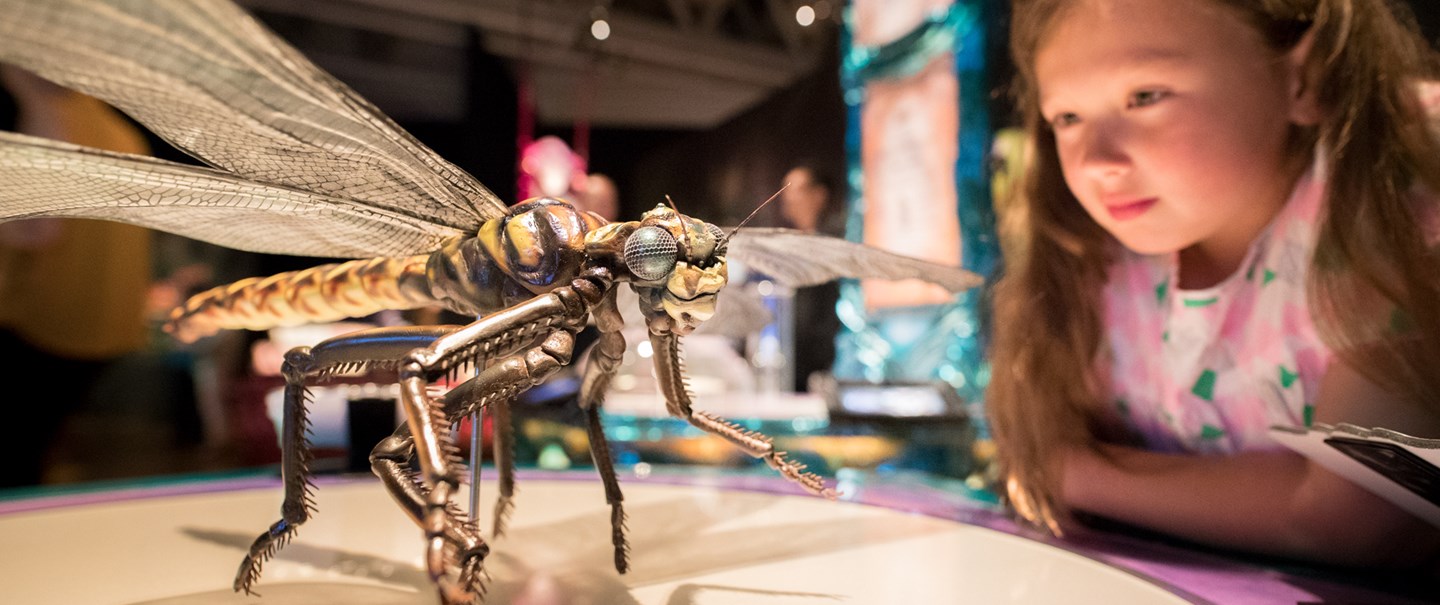Whether it’s spotting the hidden female Orchid Mantis or being mesmerized by the Blue Morpho butterfly, the newest exhibition, Bugs, at the Denver Museum of Nature & Science features larger-than-life insect models and interactive exhibits that explore the fascinating and diverse world of insects.
This hands-on exhibition was created by Te Papa Tongarewa Museum of New Zealand and Wētā Workshop the founder who also is Kiwi director Peter Jackson. He is the famous producer who also created the well-known Lord of the Rings and The Hobbit Trilogy. Wētā is the company used for the CGI and special effects that were involved in each film being created.
Those of interest can explore how insects have evolved over millions of years, and learn about the behavior and habitats of different types of bugs. Even get up close and personal with live insects in the museum’s bug zoo. This exhibition appeals to all ages, featuring fun activities for children and in-depth information for adults who are interested in learning more about these tiny, but essential creatures that make up much of the world’s biodiversity at 90%.
Learn about more than 100 different species of insects from around the world and how each plays a part in our delicate ecosystm. Observation can happen with the complex behaviors of live insects and explore hands-on activities such as creating your own insect specimens.
Fun Buggy Facts:
- The dragonfly has an 11,000-mile migration pattern which is the longest of all insect-spanning. Also, the flight pattern of Dragonflies continues to grow curiosity among engineers, globally.
- Silkworms are responsible for silk production in today’s world, it’s been breeding for thousands of years.
- Going camo to attract their prey is the Female Orchid Praying Mantises.
- The colors of the Blue Morpho butterfly are iridescent. It is not created by pigment but instead, by how the light interacts with the scales on the wings.
- Bugs are a group of insects that include more than a million different species.
- The word “bug” is often used interchangeably with the word “insect,” but technically, “bug” refers to a specific type of insect called a true bug.
- True bugs have a specialized mouthpart known as a rostrum that they use to pierce and suck plant or animal fluids.
- Some of the most common bugs include mosquitoes, ants, beetles, flies, and termites.
- Bugs come in a wide variety of sizes, from tiny dust mites to large beetles that can grow up to six inches long.
Sensory advisory: This exhibition is a high-sensory environment containing significant lighting effects (including a strobe light located in the dragonfly chamber), sounds and music, and interactive media screens.
The Denver Museum of Nature and Science respectfully acknowledges that the land we are on today is the traditional and ancestral homelands of the Cheyenne, Arapaho and Ute Nations. We also acknowledge the 48 contemporary tribal nations historically tied to the lands that comprise what is now called Colorado but who now live in the American Southwest, the Great Plains and the Rocky Mountain Region.
For more information, visit the Denver Museum of Nature & Science website for tickets and more.
All photos from Denver Nature & Science Museum








